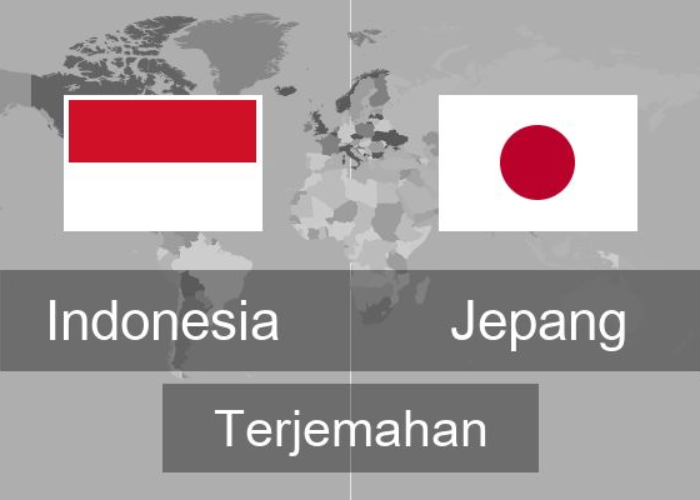Translate Jepang Indonesia is a powerful tool for translating Japanese text to Indonesian. It provides an accurate translation of Japanese language into Indonesian, making it easier for Indonesian people to understand and communicate with Japanese people. It is an essential tool for those who want to learn the language or have business dealings with Japan. With its simple user interface, Translate Jepang Indonesia makes it easy for anyone to quickly translate Japanese text into Indonesian
What is Japanese and Indonesian Language?
Japanese and Indonesian are two distinct languages that are spoken in different parts of the world. Japanese is an East Asian language spoken mainly in Japan. Indonesia is an archipelago in Southeast Asia and has many official languages, but the most widely spoken is Indonesian.
Japanese is a language that has been around for centuries. It is the official language of Japan and is spoken by nearly 125 million people. It is a language of great complexity, with a unique writing system, grammar, and vocabulary. It also has several dialects that are spoken in different parts of the country. Japanese is also a language of great beauty, as it is filled with poetic phrases and imagery.
The Difference between the Two Languages
When it comes to language, one of the most difficult tasks is to translate one language to another. This is especially true when it comes to translating Japanese to Indonesian. Not only are the two languages vastly different in terms of their grammar, pronunciation and vocabulary, but they also have different writing systems. As such, it is important to understand the differences between the two languages before attempting to translate between them.
One of the most obvious differences between Japanese and Indonesian is the writing system. Japanese is written with a combination of three scripts: hiragana, katakana, and kanji. Hiragana and katakana are two syllabic scripts, and kanji is an ideographic script. Indonesian, on the other hand, is written using the Latin alphabet. This difference alone can make it difficult to translate between the two languages.
How to Translate from Jepang to Indonesia
Translating from Japanese to Indonesian is a complex process, but with the right resources and techniques, it can be done easily and accurately. Learning how to translate from Japanese to Indonesian can open up a world of opportunities for students, business professionals, and anyone looking to communicate with others in both languages.
The first step in translating from Japanese to Indonesian is to understand the basics of the two languages. It’s important to learn the grammar, syntax, and vocabulary of each language in order to effectively communicate. Japanese and Indonesian have a great deal of similarities in their word order, syntax, and grammar, so learning the basics of one language can help make the process of learning the other much easier.
The Difference Between Japanese and Indonesian
When it comes to language, Japanese and Indonesian may seem similar at first glance. After all, they are both from the same language family, the Austronesian language family. However, the two languages are actually quite different. While there are some similarities, such as the shared use of nouns and adjectives, Japanese and Indonesian also have their own distinct features.
When it comes to pronunciation, Japanese has a simpler phonology than Indonesian. Japanese uses five vowel sounds, while Indonesian has seven. In terms of grammar, Japanese has a more complex system than Indonesian. While Indonesian relies heavily on subject-object-verb word order, Japanese has a much more flexible word order that allows for more complex sentences. Additionally, Japanese has more particles, such as the wa particle, which are used to express relationships between words.
Tips for Translating Japanese into Indonesian
When it comes to learning a new language, there are a few key elements that are important to consider. Learning Indonesian and Japanese is no different. With the right approach, you can begin to understand the nuances of both languages and eventually become proficient enough to translate Japanese to Indonesian and vice versa. In order to do this, you must first understand the basic elements of both languages.
The first element is grammar. Grammar is the foundation of any language and is essential for translating between languages. Both Indonesian and Japanese have very different grammatical structures, so it’s important to pay attention to the various rules and nuances of each language. This includes verb conjugations, word order, sentence structure, and more.
Benefits of Learning Both Languages
Learning both Japanese and Indonesian languages can be beneficial in many different ways. First, it can open up a range of opportunities for career growth and international travel. For example, many companies in Japan and Indonesia are looking for bilingual employees to better serve clients from different countries. Being able to communicate in two different languages can be a great asset to any business.
Second, it can help to bridge the gap between two different cultures. Learning the language of each country can provide a deeper understanding of the culture and help to better understand the people. This can be invaluable when trying to build relationships in either country.
Third, it can help to open up new avenues of communication. Being able to communicate in both Japanese and Indonesian can help to create a more comfortable environment when conversing with people from both countries. Having the ability to communicate in each language can help to break down language barriers and facilitate better communication.
Conclusion
Translation from Japanese to Indonesian is a difficult but rewarding endeavor. It requires a deep understanding of both languages, as well as cultural nuances that are present in both. While machine translation certainly has its place, it cannot fully replace the expertise of a human translator, who is able to deliver a highly accurate and nuanced translation.
Furthermore, translating from Japanese to Indonesian also requires an acute understanding of the literary and cultural conventions that exist between the two languages. By understanding these nuances, a translator can more accurately convey the intended meaning of a text.
